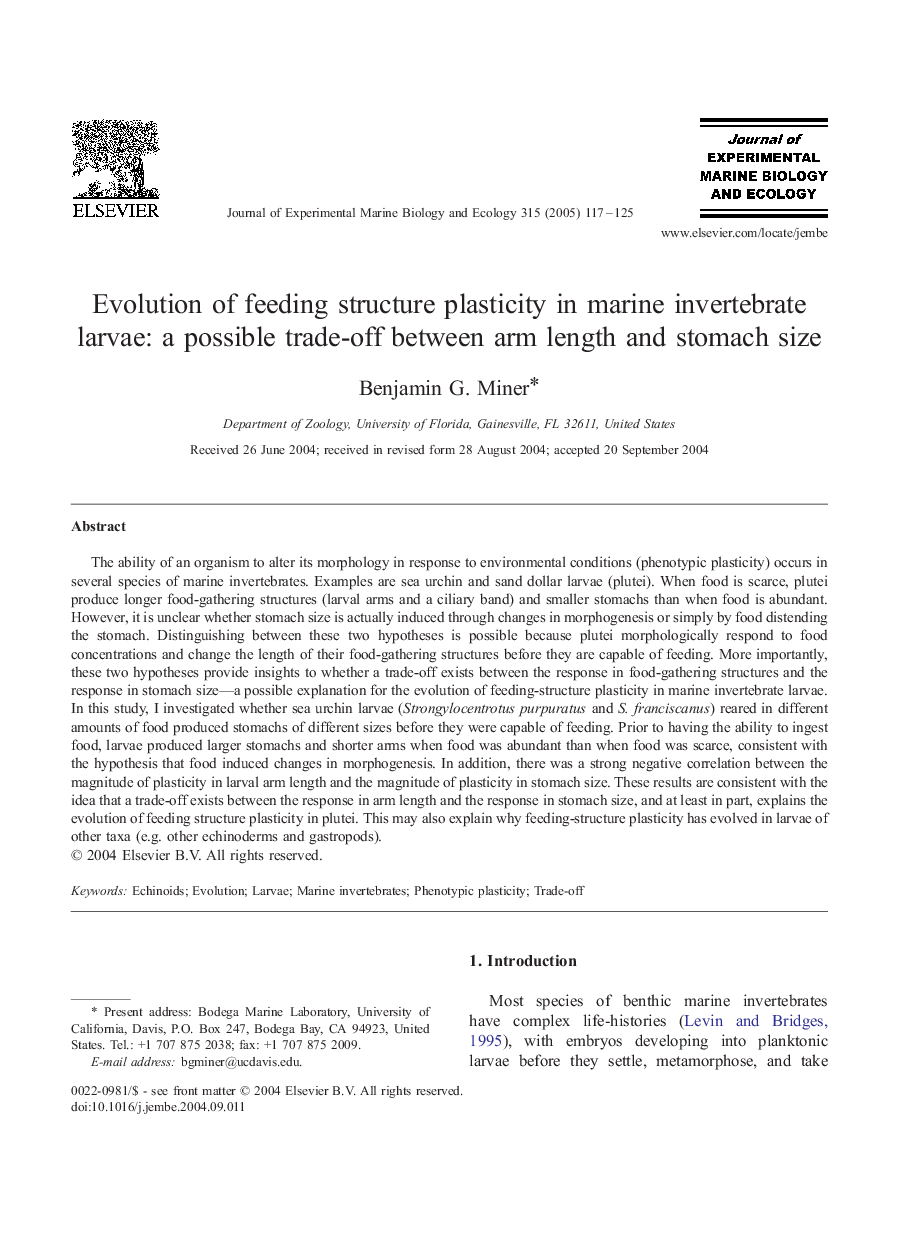| کد مقاله | کد نشریه | سال انتشار | مقاله انگلیسی | نسخه تمام متن |
|---|---|---|---|---|
| 9448875 | 1305963 | 2005 | 9 صفحه PDF | دانلود رایگان |
عنوان انگلیسی مقاله ISI
Evolution of feeding structure plasticity in marine invertebrate larvae: a possible trade-off between arm length and stomach size
دانلود مقاله + سفارش ترجمه
دانلود مقاله ISI انگلیسی
رایگان برای ایرانیان
کلمات کلیدی
موضوعات مرتبط
علوم زیستی و بیوفناوری
علوم کشاورزی و بیولوژیک
علوم آبزیان
پیش نمایش صفحه اول مقاله

چکیده انگلیسی
The ability of an organism to alter its morphology in response to environmental conditions (phenotypic plasticity) occurs in several species of marine invertebrates. Examples are sea urchin and sand dollar larvae (plutei). When food is scarce, plutei produce longer food-gathering structures (larval arms and a ciliary band) and smaller stomachs than when food is abundant. However, it is unclear whether stomach size is actually induced through changes in morphogenesis or simply by food distending the stomach. Distinguishing between these two hypotheses is possible because plutei morphologically respond to food concentrations and change the length of their food-gathering structures before they are capable of feeding. More importantly, these two hypotheses provide insights to whether a trade-off exists between the response in food-gathering structures and the response in stomach size-a possible explanation for the evolution of feeding-structure plasticity in marine invertebrate larvae. In this study, I investigated whether sea urchin larvae (Strongylocentrotus purpuratus and S. franciscanus) reared in different amounts of food produced stomachs of different sizes before they were capable of feeding. Prior to having the ability to ingest food, larvae produced larger stomachs and shorter arms when food was abundant than when food was scarce, consistent with the hypothesis that food induced changes in morphogenesis. In addition, there was a strong negative correlation between the magnitude of plasticity in larval arm length and the magnitude of plasticity in stomach size. These results are consistent with the idea that a trade-off exists between the response in arm length and the response in stomach size, and at least in part, explains the evolution of feeding structure plasticity in plutei. This may also explain why feeding-structure plasticity has evolved in larvae of other taxa (e.g. other echinoderms and gastropods).
ناشر
Database: Elsevier - ScienceDirect (ساینس دایرکت)
Journal: Journal of Experimental Marine Biology and Ecology - Volume 315, Issue 2, 25 February 2005, Pages 117-125
Journal: Journal of Experimental Marine Biology and Ecology - Volume 315, Issue 2, 25 February 2005, Pages 117-125
نویسندگان
Benjamin G. Miner,